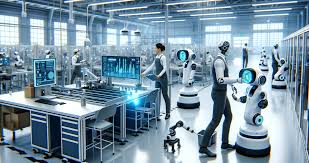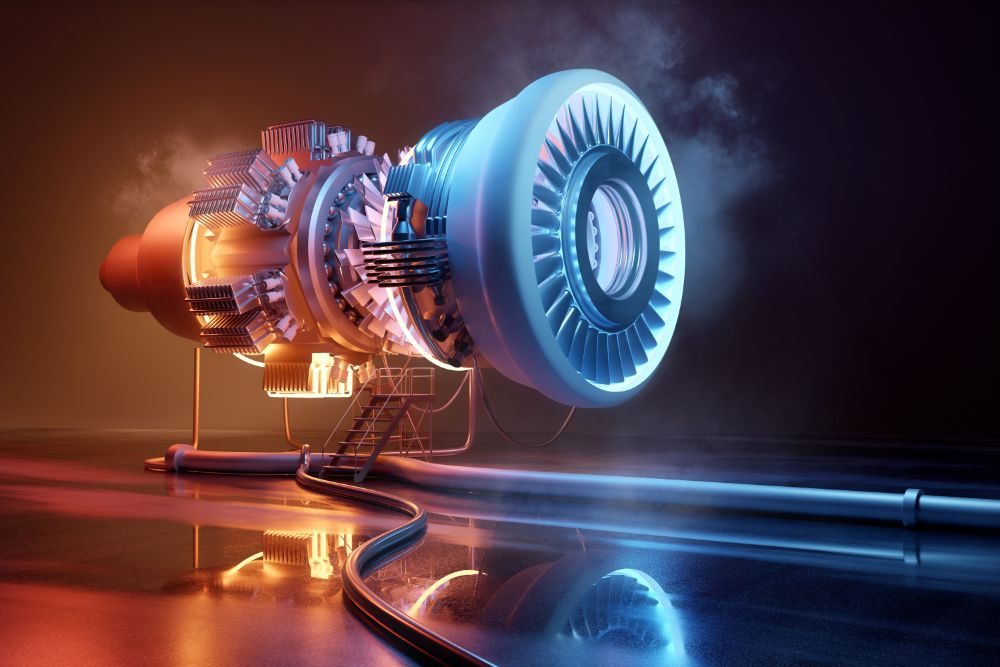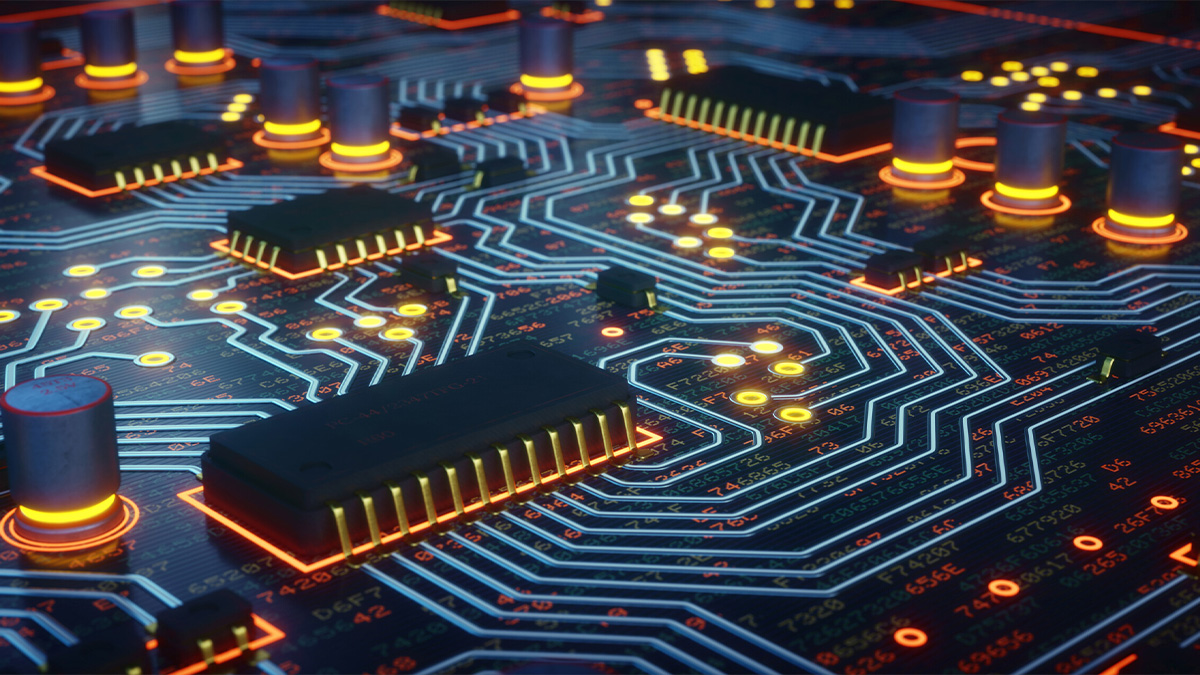Revolutionizing Workforces: Collaborative Robots and the Innovation Odyssey

Introduction:
In the ever-evolving landscape of modern industry, collaborative robots (cobots) have emerged as game-changers. These advanced machines are designed to work alongside humans, enhancing productivity, safety, and efficiency. But as cobots continue to integrate into various industries, they bring with them complex ethical challenges that must be addressed to ensure they truly benefit society. Among these challenges is the critical issue of ensuring a fair and safe workplace for humans while leveraging the power of automation.
Get FREE Sample: https://www.nextmsc.com/collaborative-robot-market/request-sample
The Rise of Collaborative Robots
Collaborative robots, or cobots, are specialized machines built to work in tandem with human workers in a shared workspace. Unlike traditional industrial robots, which are typically confined to safety cages to prevent accidents, cobots are designed to interact directly with people. They come equipped with sensors, advanced AI algorithms, and soft materials that allow them to safely and efficiently work alongside humans.
The introduction of cobots has sparked a revolution in industries ranging from manufacturing to healthcare. In factories, cobots assist in assembly lines, taking on repetitive and strenuous tasks like lifting heavy objects, while leaving more complex and decision-driven jobs to humans. In healthcare, cobots support surgeries or assist caregivers with patients, providing precision and reducing human error.
With their ability to automate routine tasks, cobots enhance human workers' productivity by allowing them to focus on higher-value work. However, while the rise of cobots promises numerous benefits, it also raises important ethical concerns, particularly around human safety, job displacement, and equitable access to this transformative technology.
The Ethics of Collaborative Robots
As collaborative robots gain momentum in workplaces worldwide, it's crucial to consider the ethical implications of integrating these machines into human-centric environments. The central ethical questions that arise revolve around ensuring a safe, fair, and transparent workplace for human workers.
1. Ensuring Human Safety in Collaborative Workspaces
One of the primary concerns when it comes to cobots is the safety of human workers. While cobots are designed with safety features like sensors and soft touch capabilities, there is still a risk that they could malfunction or interact poorly with humans in unpredictable ways. As cobots become more widespread in diverse industries, safeguarding human well-being must remain a priority.
Safety protocols should be established at every level of cobot integration, from design to deployment. Manufacturers must ensure that cobots are equipped with emergency stop functions, real-time monitoring systems, and intuitive interfaces. Furthermore, workers must be adequately trained on how to interact with these machines safely. Regulatory bodies may need to update existing industrial safety standards to reflect the growing presence of cobots in workplaces.
2. Job Displacement and Workforce Transformation
While cobots are known to take over repetitive and labor-intensive tasks, many worry that their adoption will lead to job displacement. Automation, in general, has long been associated with the potential to replace human workers, and cobots are no exception. However, it is essential to recognize that cobots do not necessarily replace human workers but augment their roles by taking on tasks that can be hazardous or monotonous.
Rather than causing widespread job losses, cobots can create new opportunities for workers to take on higher-level tasks that require critical thinking, creativity, and problem-solving. For example, in manufacturing, humans can focus on design, quality control, and innovation while cobots handle the heavy lifting.
However, to ensure a fair transition, it's crucial that companies offer training and reskilling programs for workers displaced by automation. These programs should focus on equipping workers with the skills needed for emerging roles in areas such as robot programming, data analysis, and robot maintenance. Collaboration between employers, governments, and educational institutions is vital to create a workforce that can thrive alongside advanced robotics.
3. Fair Access to Collaborative Robots
As cobots become more prevalent, there is also the concern of fair access to this technology. Smaller businesses and developing countries might struggle to afford the advanced tools needed to stay competitive. On the other hand, larger corporations with more financial resources may quickly adopt cobots, widening the technology gap.
Policy frameworks need to ensure that businesses of all sizes have access to the benefits of automation. Government incentives, subsidies, and tax breaks could level the playing field and encourage innovation among smaller firms. Moreover, cobot manufacturers should consider designing affordable solutions tailored to the needs of small- and medium-sized enterprises (SMEs), enabling them to benefit from increased efficiency and productivity.
Furthermore, it is essential to address social inequality by ensuring that cobot-driven industries provide equitable access to job opportunities. The technology must be deployed in a way that creates inclusive economic growth and reduces the disparities between regions, industries, and social groups.
4. Ethical AI and Autonomy in Collaborative Robots
As cobots become more advanced, many of them are powered by Artificial Intelligence (AI), enabling them to make decisions and adapt to dynamic environments. While AI enhances cobot performance, it also raises concerns about autonomy, accountability, and decision-making.
Download Sample of Artificial Intelligence (AI) Market: https://www.nextmsc.com/artificial-intelligence-market/request-sample
One of the primary ethical challenges surrounding AI-powered cobots is the potential for bias in decision-making. AI systems are only as good as the data used to train them, and if the data contains biases—whether in terms of race, gender, or other factors—the cobots may inadvertently perpetuate these biases. For example, in a healthcare setting, a cobot could potentially make biased decisions about patient care based on flawed algorithms.
To address this, it is critical to implement transparent AI development practices. AI systems should be regularly audited for fairness and accuracy, and developers should strive to ensure that training data is free of bias. Moreover, clear accountability structures must be established to ensure that humans remain responsible for the decisions made by cobots.
5. Collaboration Between Humans and Robots: A Cultural Shift
As the nature of work evolves with the integration of cobots, there must also be a cultural shift in how employees view robots. Instead of perceiving cobots as competitors, workers should see them as collaborators—partners that enhance their capabilities rather than replace them. This shift in mindset is essential for maximizing the potential of collaborative robots and fostering harmonious, productive working relationships.
To create a collaborative work environment, companies should promote education about the benefits of human-robot collaboration. This includes cultivating a workplace culture of mutual respect and emphasizing the importance of human skills such as problem-solving, empathy, and creativity, which cannot be replicated by machines.
Additionally, involving workers early in the design and implementation of cobot systems can help to build trust and ensure that the technology aligns with workers’ needs. Feedback loops, where employees have input into the design and functionality of cobots, can also contribute to greater acceptance and a safer, more productive work environment.
The Path Forward: Ethical Standards and Regulations
As cobots become an integral part of the workforce, the need for clear ethical standards and regulations becomes more urgent. Governments, industry leaders, and ethics committees must collaborate to develop frameworks that address the various concerns surrounding collaborative robots.
1. Establishing Legal Standards
Governments should establish regulations to ensure that cobots are developed and deployed safely and ethically. This includes standards for workplace safety, worker training, and the ethical use of AI. Moreover, as cobots become more capable, legal frameworks may need to be updated to address questions of liability—such as who is responsible when a cobot malfunctions or causes harm.
2. Industry Self-Regulation
In addition to government regulations, the robotics industry should implement its own self-regulatory practices. This could include creating ethical guidelines for the design, testing, and deployment of cobots, with a focus on transparency, fairness, and safety. Industry organizations should also promote ongoing research into the social and ethical implications of cobots to stay ahead of potential issues.
3. Ongoing Public Dialogue
To ensure that cobots serve the broader interests of society, it is crucial to maintain an ongoing public dialogue about the ethical implications of these technologies. This dialogue should involve not just engineers and business leaders, but also ethicists, workers, policymakers, and the public. By including diverse perspectives, we can ensure that cobots are developed in a way that benefits everyone.
Conclusion
Collaborative robots are revolutionizing the workforce, offering unprecedented opportunities for efficiency, safety, and innovation. However, their rapid adoption comes with a host of ethical challenges, particularly around human safety, job displacement, and access to technology. To ensure that cobots contribute positively to society, we must implement clear ethical guidelines, foster a culture of collaboration, and ensure that workers are adequately trained and supported. By addressing these ethical concerns, we can create a future where humans and robots work together harmoniously to build a more productive, equitable, and sustainable world.
Read the complete blog: https://www.nextmsc.com/blogs/collaborative-robot-market-trends
Note: IndiBlogHub features both user-submitted and editorial content. We do not verify third-party contributions. Read our Disclaimer and Privacy Policyfor details.







